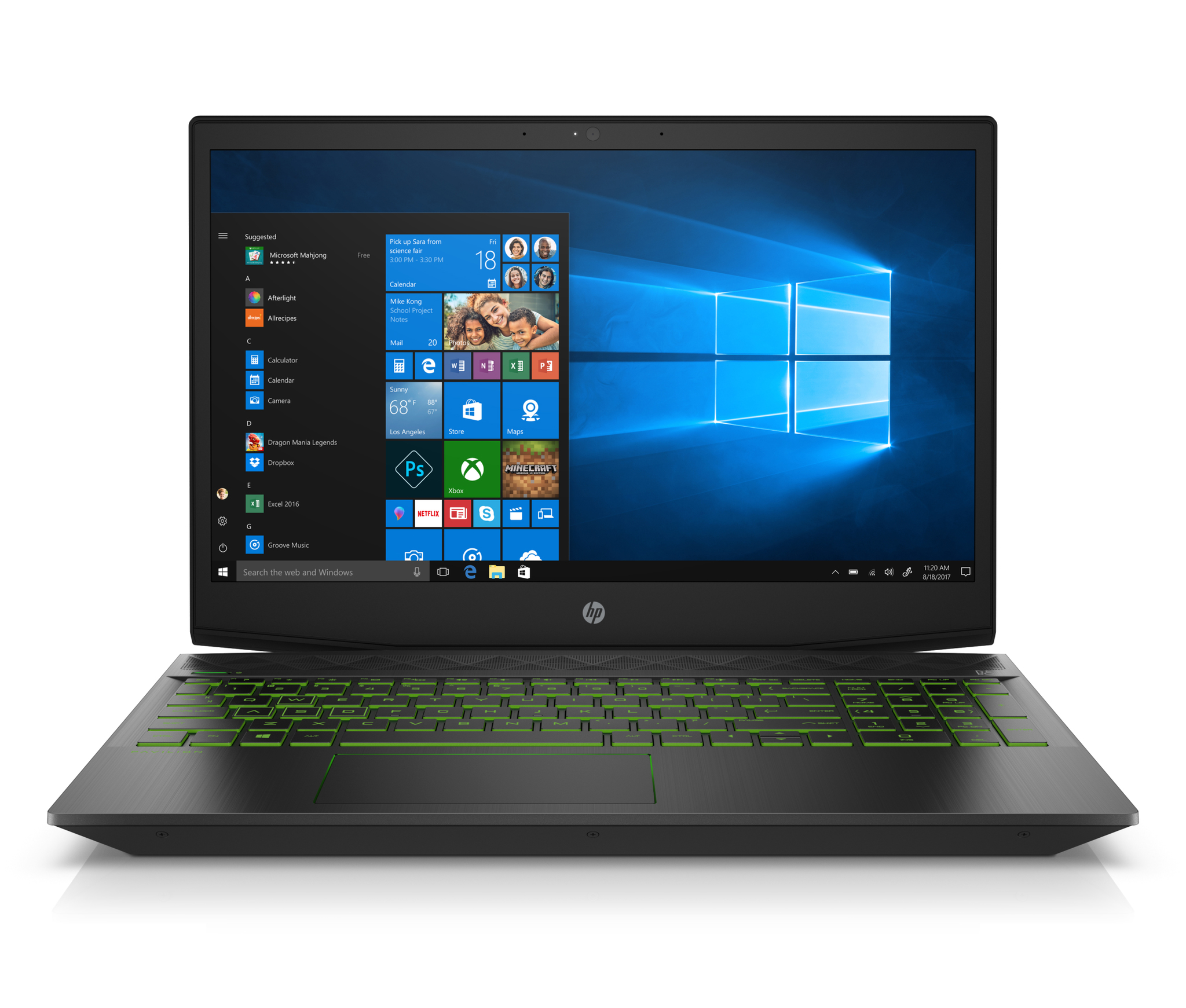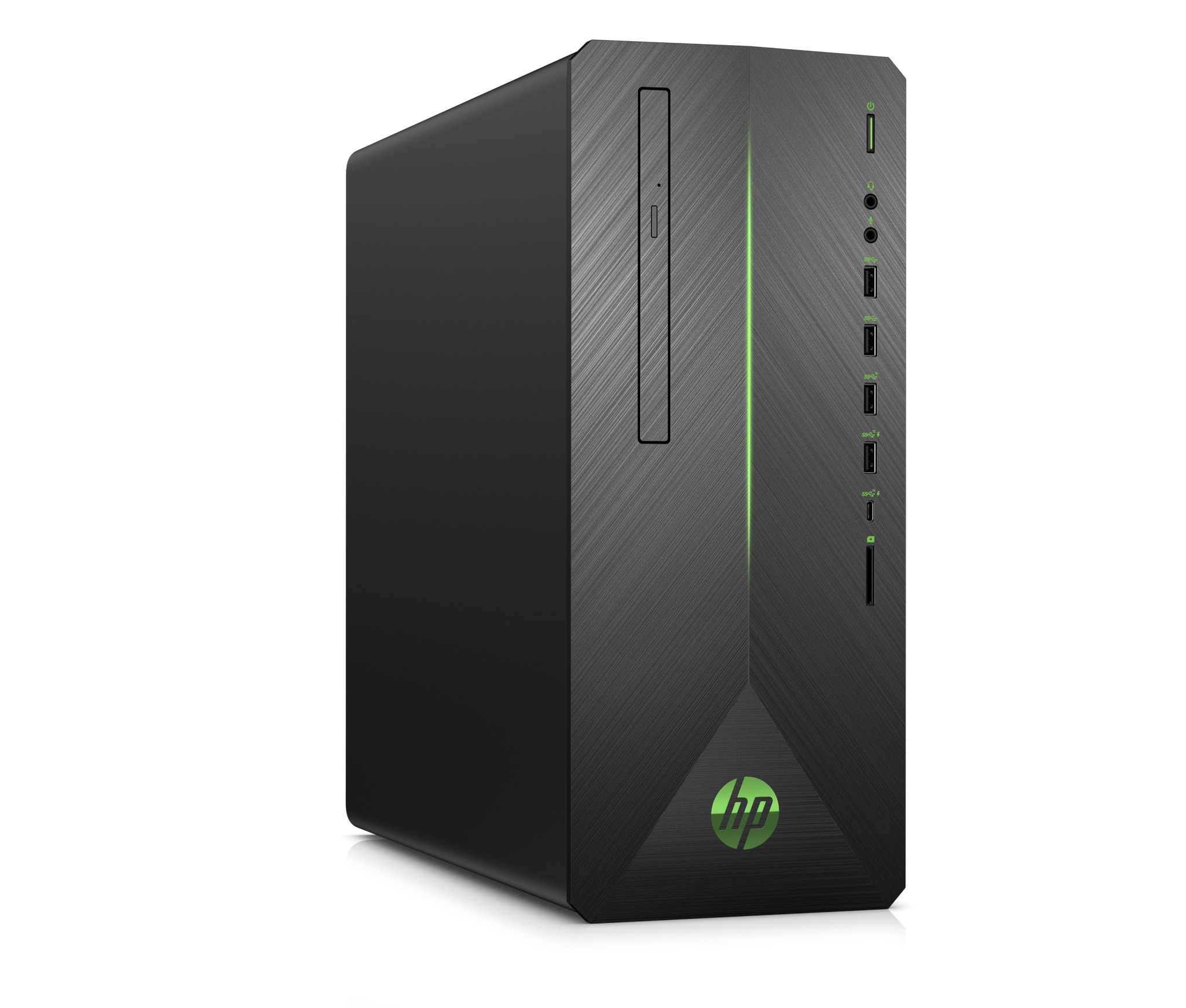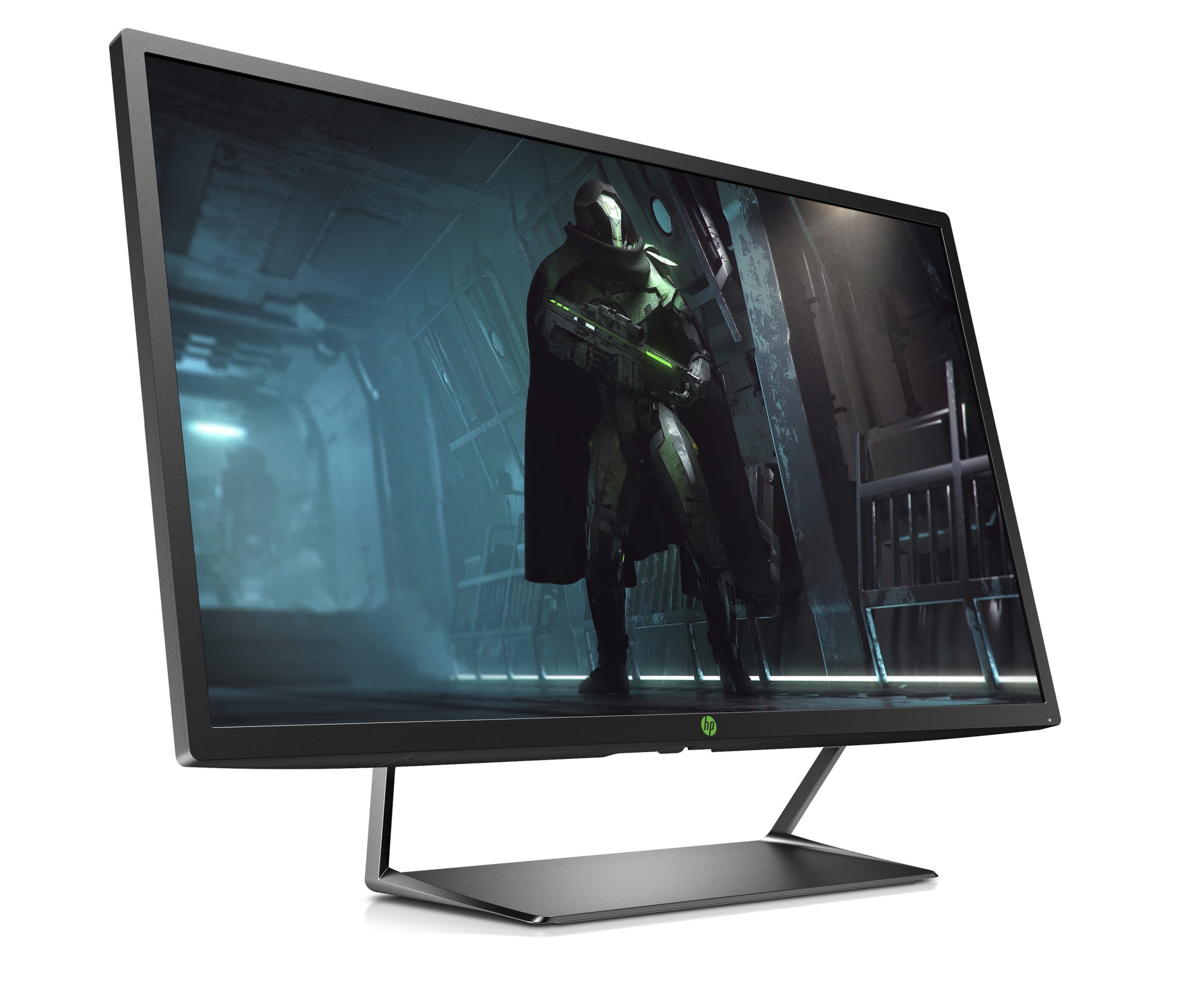HP launched new gaming entrants to its Pavilion mainstream consumer products. The new Pavilion Gaming line contains the 15” Pavilion Gaming laptop, 690 and 790 desktops, and Gaming 32 FreeSync monitor.
HP isn’t a newcomer to the gaming market. Just as Dell acquired Alienware, HP acquired boutique desktop builder Voodoo years ago and turned it into an in-house brand called Omen. Omen products can get pretty expensive, though, so HP has added a gaming segment to its well-known Pavilion consumer computer brand. The new line is simply called Pavilion Gaming. Instead of featuring the Omen products’ exclusive designs, the Pavilion Gaming products share most of their parts with other HP computers.

Starting with the only laptop in the line, the Pavilion Gaming 15.6” seems to share a chassis with the recently announced HP Zbook 15v. The external differences are the color--it can be had in black with white, green, or purple accents--and the keyboard, which is backlit with static lighting. The screen options are a 1080p 60Hz panel, a 144Hz panel, or a 60Hz 4K panel. Processor options range from the four-core Intel i5-8250U to the six-core i7-8750H, and graphics options range from the Nvidia GTX 1050 to the GTX 1060 Max-Q. The chassis can fit a 2.5” drive in addition to an PCIe M.2 drive, so numerous options, including Intel Optane-accelerated hard drive configurations, are available.

Next up are two desktops: the Pavilion Gaming 690 and 790. Both pre-built systems occupy a small footprint, but the 690 is the smaller of the two. Because it’s smaller, the 690 cannot fit long graphics cards and is limited to an AMD RX 550 or Nvidia GTX 1060. CPU options for the 690 are strange, because the RX 550 configuration comes with an AMD Ryzen 2200G processor. Of course, using a processor with integrated graphics in a desktop with discrete graphics is common on the Intel side, but AMD has Ryzen processors without graphics for that purpose. As far as we’re aware, Ryzen-G doesn’t allow for graphics switching or integrated-mixed-discrete Crossfire, so no power savings or performance boost should be realized.
The higher-end GTX 1060-equipped version of the 690 has an Intel i7-8700. The larger 790 can fit the same processor and up to a GTX 1080 graphics card.

The last of HP’s new Pavilion Gaming products is the Gaming 32 monitor. It shares its design with the regular Pavilion 32” monitor, but it features a 75Hz QHD (2560x1440) panel with 95% coverage of DCI-P3 and 600nit peak brightness. The monitor implements FreeSync, but HP didn’t state if it can use low framerate compensation (LFC). LFC effectively removes the lower floor of FreeSync’s active range to ensure frames are always in sync (just like G-Sync), but it requires that the screen’s maximum refresh rate be at least double its minimum.
Full specs and configurable options for HP’s Pavilion gaming products haven’t been announced yet. We know the Pavilion Gaming 15.6” laptop will have a starting price below $799 in select markets, and the 690 and 790 desktops will having starting prices of $549 and $749, respectively. They are expected to be available starting in May.
Stay On the Cutting Edge: Get the Tom's Hardware Newsletter
Get Tom's Hardware's best news and in-depth reviews, straight to your inbox.
-
justin.m.beauvais What the heck HP? Putting an RX 550 into a system with a 2200G is kinda dumb. The 2200G's built in graphics are nearly as capable as the RX 550. If you want to save some money, dump the 550 and use the Vega integrated. If you want better performance forget the 550 and give people the option of the RX 560. At least that would be a noticeable boost in performance.Reply -
alextheblue Reply20878788 said:What the heck HP? Putting an RX 550 into a system with a 2200G is kinda dumb. The 2200G's built in graphics are nearly as capable as the RX 550. If you want to save some money, dump the 550 and use the Vega integrated. If you want better performance forget the 550 and give people the option of the RX 560. At least that would be a noticeable boost in performance.
Yeah the 560 should be the minimum discrete option. Below that they should offer the 2400G by itself with some decent RAM. Even a cheap 3000 kit does wonders. But this is a mainstream OEM system, they do silly things. -
jdog2pt0 I've pretty much written off HP. Never been impressed with any of their products, and all the one's I've owned/dealt with caused me nothing but problems. Tried talking my dad out of buying another HP laptop, he did it anyways and it didn't take him long to realize his mistake.Reply